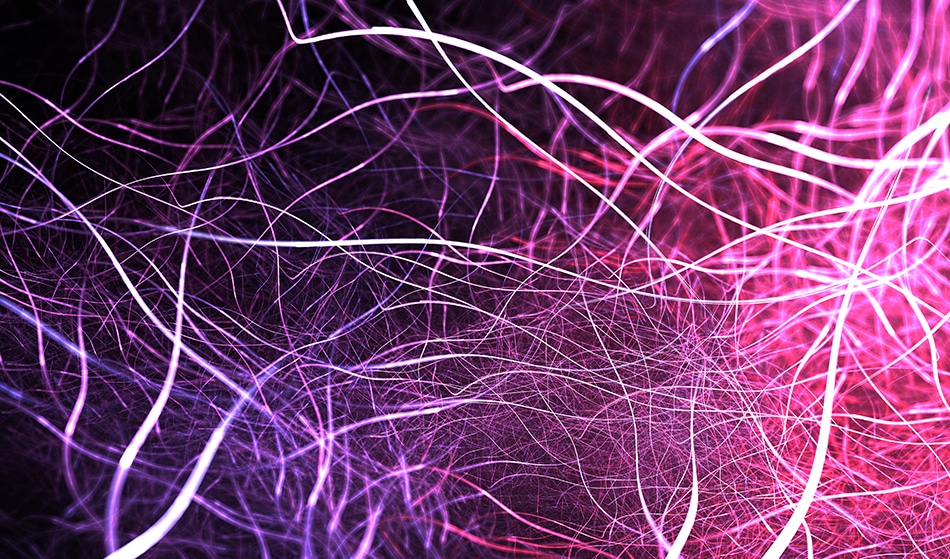 Jurik Peter/shutterstock
Jurik Peter/shutterstock
A group of researchers from the Massachusetts Institute of Technology’s Department of Chemical Engineering have recently introduced a fabrication method known as gel electrospinning to create superior nanofibers. The ultrathin fibers produced by this technique exhibit superior strength and flexibility, as compared to the previously best nanofibers that are currently available on the market.
Nanofibers and Their Industrial Applications
By definition, a nanofiber is a fiber whose diameter measures at 100 nanometers or less. The following industries are some of the many ways in which nanofibers are incorporated into a specific application or product.
- Medicine: Nanofibers comprised of biodegradable polymers have improved the functionality of numerous medical applications as a result of its close structural and size similarities to human cells and organelles. These applications include biopolymers for drug delivery, wound dressings and research in the field of tissue engineering1.
- Apparel: Electrospun nanofibers have successfully enhanced the product functionality of various performance apparel applications for outdoor, occupational and industrial purposes. The layer thinness, high permeability, filtration properties and high surface area properties of these polymer nanofibers improve the breathability, resistance to both water and wear and insulation of these apparel fabrics to meet a diverse range of consumer uses2.
- Inorganic Materials: Nanofibers that are composed of ceramic or metal oxides have been incorporated to a number of industrial applications including nanocomposites, electrodes and sensors3. Nanofibers improve the light absorption, structure, electric and magnetic properties when used for these purposes.
Nanofiber Production
To produce nanofibers on an industrial scale, the most common production methods include melt fibrillation, island-in-sea, gas-jet techniques, nanolithography and self-assembly. Despite the usefulness of these fabrication methods, they are often limited by their cost, fiber assembly and production rate. As a result, the electrospinning method of producing nanofibers is most often utilized.
The versatility of nanofibers is attributed to the wide range of polymers that can be transformed to the nanoscale. To electrospin a material, any soluble polymer with a high molecular weight can be utilized. Some of these polymers can be comprised of natural, blends, nanoparticle-/drug-impregnated or ceramic materials4. During electrospinning, the polymer solution passes through a spinneret. To create the extrusion force, a high voltage is applied to create a charge to the solution and the spinneret, thereby creating a repulsive force between the two. As the charged jet of polymer particles accelerates, the solvent evaporates while the entanglements of the polymer chains solidify into fibers that are collected on a grounded plate.
Gel Electrospinning for Nanofiber Production
The gel electrospinning process utilized by MIT’s Gregory Rutledge and his post-doctoral fellow Jay Park is very similar to tradition electrospinning methods. However, instead of using the multiple stages commonly used in the conventional electrospinning process, these researchers instead require a single stage for their fabrication technique. Starting with a gel polymer that is spun into fibers, an electrical force, rather than a mechanical force in the conventional method, draws the fibers out from the syringe. The charged nature of the fiber induces a “whipping” instability during the spinning process that allows for the ultrafine dimensions of strength, flexibility and toughness to be created.
In their study, the researchers found that the resulting fibers exhibited strengths of 3.5 ± 0.6 GPa, a toughness of 1.8 ± 0.3 GPa, as well as a diameter as small as 490 ± 50 nm5. These properties are much superior as compared to the nanofibers currently offered on the market today. In addition to these superior mechanical qualities, the gel electrospun nanofibers also exhibit fewer defects and improved chain slip that is attributed with the smaller diameter and high surface area of the fibers.
References:
- “Medicine” – Elmarco
- “Performance Apparel” – Elmarco
- “Inorganic Material” – Elmarco
- “Electrospun nanofibers: solving global issues” S. Ramakrishna, K. Fujihara, et al. Materials Toay. (2006). DOI: 10.1016/S1369-7021(06)71389-X.
- “Ultrafine high performance polyethylene fibers” J. Park and G. Rutledge. Journal of Materials Science. (2018). DOI: 10.1007/S10853-017-1724-z.
Disclaimer: The views expressed here are those of the author expressed in their private capacity and do not necessarily represent the views of AZoM.com Limited T/A AZoNetwork the owner and operator of this website. This disclaimer forms part of the Terms and conditions of use of this website.